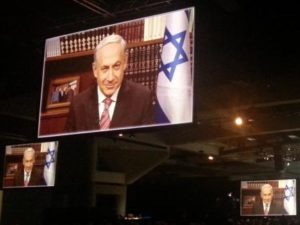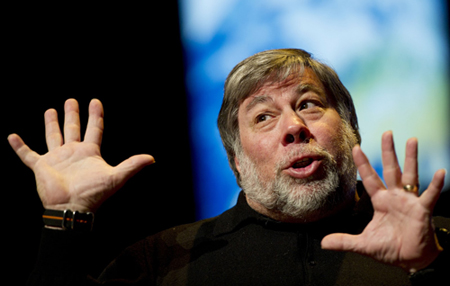 This is one of a series of articles I wrote for the monthly Bulletin of Peninsula Temple Sholom in Burlingame, Calif.
This is one of a series of articles I wrote for the monthly Bulletin of Peninsula Temple Sholom in Burlingame, Calif.
Some PTS families light Shabbat candles every Friday night. That is authentic Reform Judaism. Some families rarely or never light Shabbat candles. That, too, is authentic Reform Judaism.
Reform Judaism is both a living religion and a vibrant culture. As Reform Jews, we are charged with using the Torah as a guide to living meaningful lives and making the world a better place. We carry out rituals and maintain traditions that have meaning in our lives. It’s up to us to make informed, educated decisions about which rituals and traditions to follow, both in our homes and in our synagogues.
That’s why some in our congregation keep strictly kosher homes, and won’t ever eat non-kosher food outside the home. That’s authentic Reform Judaism. Others cook and enjoy bacon cheeseburgers. That’s authentic Reform Judaism too. Some say that “ethnic food” means corned beef and matzo ball soup; others prefer a little shrimp or stir-fry pork on their Passover rice. Both are authentic Reform Judaism.
What about holidays? PTS congregants build a sukkah every year, host a Passover seder, light candles each night of Chanukah, and fast for Yom Kippur. Other congregants never do any of these things.
Some families observe one day of Rosh Hashanah and seven days of Passover; others follow two days of Rosh Hashanah and eight days of Passover.
All represent authentic Reform Judaism.
How do you choose to observe?
Do you come to services to observe a yahrzeit? Do you put on t’fillin? Do you attend Torah study? If so, you are an authentic Reform Jew. If you don’t, you are also an authentic Reform Jew. Do you believe women should wear a tallit and read from the Torah? Some Reform Jews do, and others do not.
Do you trace your Jewish lineage in an unbroken line from great-grandmother to grandmother to mother to you? You are an authentic Reform Jew. Does your Jewish heritage come from your father only – or are you a Jew by choice? You, too, are an authentic Reform Jew.
This diversity is our strength, and demonstrates why Reform Judaism is the largest, fastest-growing Jewish denomination in North America.
In early December, more than 5,000 Reform Jews will attend the Biennial Convention of the Union from Reform Judaism.
We will gather in San Diego to study, to pray, to teach, to learn, to share ideas about synagogue management, to get in touch with our spirituality, to celebrate the 100th anniversary of Women of Reform Judaism, to meet with Israeli Prime Minister Bibi Netanyahu, to inspire and to be inspired. I am looking forward to attending, as are Rabbi Dan Feder, our executive director Sandy Silverstein, and a large delegation from PTS.
Celebrating diversity
The Biennial celebrates the diversity of authentic Reform Judaism here in North America, and of progressive Judaism throughout the world.
We can see the diversity of Reform Judaism right here in our own Burlingame congregation. Every possible practice, it seems, can be found within our members’ homes.
Peninsula Temple Sholom is a model for both the diversity and evolution of Reform Jewish practice. My family became part of the PTS community in the early 1990s, and under Rabbi Raiskin z”l and Rabbi Feder, we’ve seen rituals come and go, and traditions reinvented and reinterpreted. Constant change is here to stay. Constant change is the earthquake-proof foundation of Reform Judaism as we reevaluate what works, what is meaningful, and what speaks to our collective minds, souls, and spirit.
As part of my role as a board member with the Union for Reform Judaism, I’m privileged to attend worship services at Reform synagogues all over North America. From Burlingame to Berkeley, from Dallas to Denver, from Seattle to St. Petersburg, from Boston to Brooklyn, from Los Altos to Las Vegas, from Palm Desert to Phoenix, every shul is different.
Every rabbi, every cantor, every service.
The tunes and readings and prayers are the same, but sometimes they are unique. Some synagogues use Mishkan T’filah, some still use Gates of Prayer, and others use their own home-made siddurim. The onegs. The motzi. The engagement of the congregation, of lay leaders, of young people, of guests. Never the same in two synagogues. Yet each time, it’s authentic Reform Judaism.
I am proud to be part of the most vibrant Jewish movement in North America. I am proud to be part of a movement that is authentic, organic, energetic, growing, engaging, advancing, evolving — well, moving. That’s why we’re a movement.
Reform Judaism never stands still.
 I’ve had the opportunity to meet and listen to Steve Wozniak several times over the years. He’s always funny and engaging, and his scriptless riffs get better all the time. With this one, he had me rolling in the aisle.
I’ve had the opportunity to meet and listen to Steve Wozniak several times over the years. He’s always funny and engaging, and his scriptless riffs get better all the time. With this one, he had me rolling in the aisle.
 Here’s today’s mis-directed sales pitch. It was good for a laugh, if nothing else.
Here’s today’s mis-directed sales pitch. It was good for a laugh, if nothing else. This is one of a series of articles I wrote for the monthly Bulletin of
This is one of a series of articles I wrote for the monthly Bulletin of